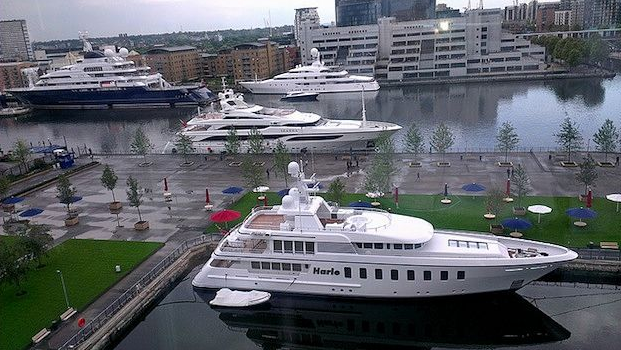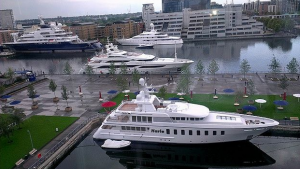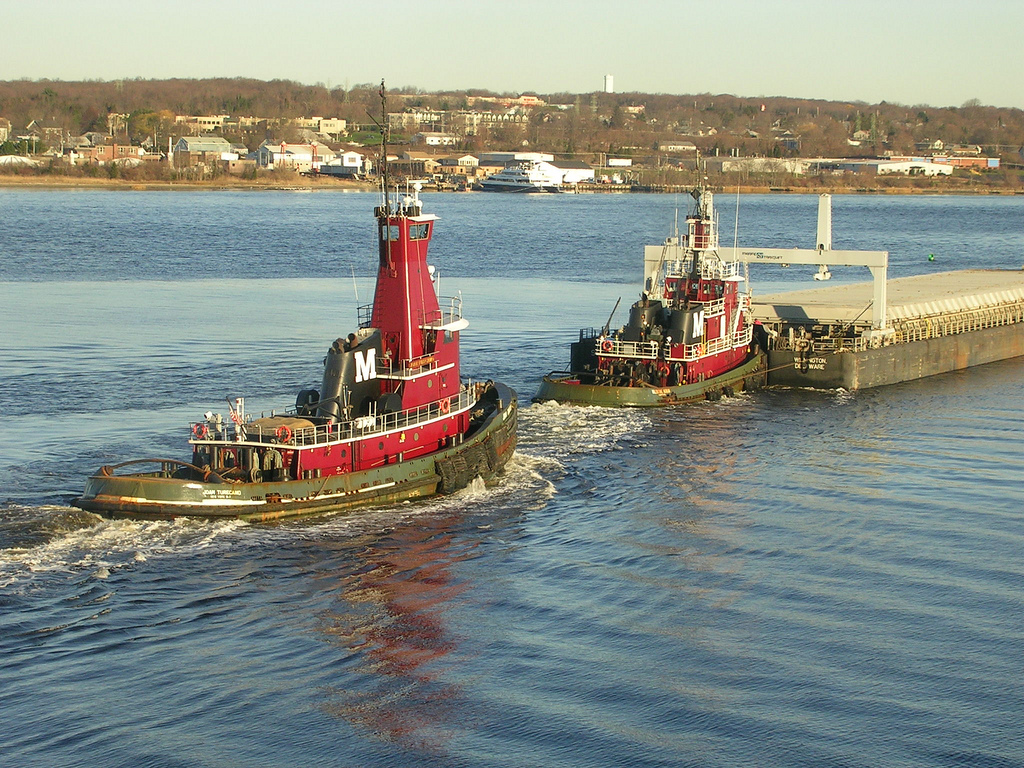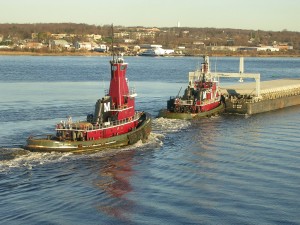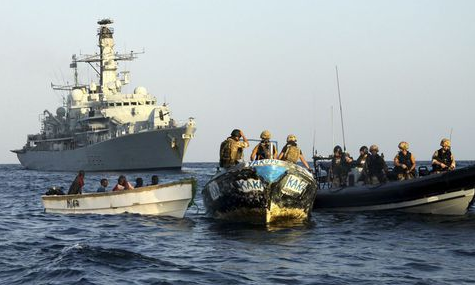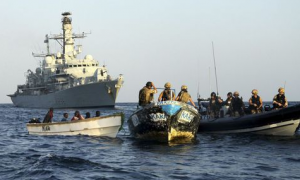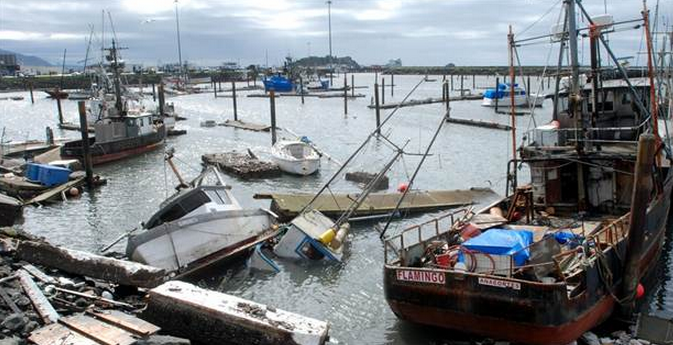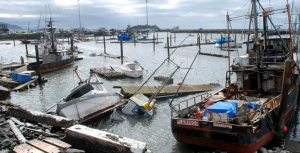
by shipyour | Dec 7, 2012 | Captains Blog
 If you Google “Roughest Stretch of Water in the World”, 90% of the results will mention the Drake Passage. The Drake Passage is a 600 mile wide waterway that connects the Pacific and Atlantic oceans between the South Shetland Islands and Cape Horn, and considered one of the worlds roughest waters. The Drake Passage was known for its stormy seas and icy conditions, which made getting through Cape Horn a real test for the ships and crews that were pushing through it. Cyclones that form in the Pacific Ocean cut from west to east across the southernmost part of the passage and add to the rough waters. Another test for this passage is the low temperature winds that range from 41 ˚F in the north and 27 ˚F in the south.
If you Google “Roughest Stretch of Water in the World”, 90% of the results will mention the Drake Passage. The Drake Passage is a 600 mile wide waterway that connects the Pacific and Atlantic oceans between the South Shetland Islands and Cape Horn, and considered one of the worlds roughest waters. The Drake Passage was known for its stormy seas and icy conditions, which made getting through Cape Horn a real test for the ships and crews that were pushing through it. Cyclones that form in the Pacific Ocean cut from west to east across the southernmost part of the passage and add to the rough waters. Another test for this passage is the low temperature winds that range from 41 ˚F in the north and 27 ˚F in the south.
The Drakes Danger
The location of the Drake Passage contributes greatly to its treacherously rough waters and its reputation. The Drake is located on a narrow gap that is between landmasses, in an area with naturally high wind speeds, and a massive global current. These factors make the passage one of the roughest waters in many regions, even ones that have extremely rough seas. The current running through the Drake forms part of the Antarctic Circumpolar Current, which is the most voluminous current in the world and pushes between 3,400 and 5,300 million cubic feet through per second.
Touring the Drake
Historical accounts of early Antarctic exploration have brought an increase in Antarctic tourism, which the majority of crosses the Drake. With tourists crossing regularly, the Drakes reputation for rough waters has become better known. Many early explorations mention the rough condition of the Drake and the waters around it. This is also a good area for whale, dolphin, and seabird watching. Blue and fin whales, crabeater seals, petrels, albatross and penguins are all common sightings during tours on the Drake Passage.
Other Rough Waters
There are many other seas around the world that are as rough, or even some that are rougher, than the Drake Passage. One example of another of the worlds roughest waters is the North Atlantic shores near Gloucester, MA. This area is frequented by hurricanes, and has been quoted as “the roughest stretch of water in the world”. The movie ‘The Perfect Storm’ was even written about a storm in this area. The Southern Ocean is known for having huge swells and rough seas, with the rough water being comparable to the Drake Passage. Most of the Antarctic cruise ships avoid these waters and push through the Antarctic Peninsula from South America, which means that the danger of the South Ocean is less well known.

by shipyour | Dec 4, 2012 | Captains Blog
 The occupancy levels at the Palm Beach docks are down this year with occupancy levels at only 89%, compared to last year’s 94%. The low occupancy is believed to be a mixture of the bad economy and hurricane Sandy’s timing.
The occupancy levels at the Palm Beach docks are down this year with occupancy levels at only 89%, compared to last year’s 94%. The low occupancy is believed to be a mixture of the bad economy and hurricane Sandy’s timing.
Though there are many yachts for sale Captain Hipple doubts that the docks will have trouble filling spots.
The dock master, Kenny Kooyenga, believes that the occupancy will increase and that one of the reasons for there not being as many boats for this time of year is because of hurricane Sandy. He expects another half dozen to be arriving over the next few weeks that were held up due to the storm.
Yacht Bargains
The suffering economy is causing many yacht owners to sell their vessels, especially those new to the yachting world, and some are selling for a ridiculously low price. Captain Bill Hipple, captain of the Lady Kath, has personally seen yacht bargains where a yacht valued at $28 million is selling for just under $15 million.
A lot of long-established yachtsmen are buying brokered boats because of other yacht bargains like this, with many other sellers letting go of their yachts for prices much lower than what they’re valued at. You can even find some online yacht bargains pretty easily too!
Docking Your Yacht
An annual contract for a 50-foot slip at the Palm Beach docks is currently $18,270.08 after state sales tax, with the seasonal contract (Nov. 1 to April 30) going at $14,665.05.
These rates, according to the Director of Recreation, have increased 2% from last year. The rate increase came about after doing a market analysis that compared prices to other Palm Beach County Mega-Yacht marinas, which showed that they were below what the other marinas were charging.
Upgrades
The rate increase has been put towards several projects at the dock for upgrades and repairs. The Australian dock is currently upgrading the power supplies at 7 large slips, which should be concluded by June.
Repair work is currently being done on the Brazilian and Australian dock house foundations and is on schedule for the expected completion date. New shrubbery and sod are also being installed in the marina.
Another upgrade to look forward to is marina-wide Wi-Fi that will be free to clients and patrons of the marina.
Restrictions
Due to being located in Palm Beach there are only so many upgrades that can be done. Palm Beach’s strict codes and regulations make it difficult to make parking changes, cable and internet upgrades, and even wider docks.
Even with these restrictions boaters like Captain Hipple will stay in Palm Beach because of the community and lifestyle. “These people are going to stay here as long as their lifestyle stays the same.”

by shipyour | Nov 16, 2012 | Captains Blog
Due to water restrictions caused by drought, commercial boating traffic may be reduced or even halted by boating restrictions in an attempt to save water. The Missouri River is suffering from the worst drought that’s been seen in nearly 60 years and businesses could suffer heavily from it.
The Missouri River outputs around 60% of the Mississippi’s water, but with the drought causing the Mississippi’s water levels to be lower than normal the Missouri is having to output more water and is accounting for roughly 80% of the water flowing in the Mississippi.
The Army Corps will start reducing the amounts of water being released from Gavins Point Dam to conserve water in the reservoir, which is water going from the Missouri River to the Mississippi River and will cause water levels in the Mississippi to be lower than normal. Water levels this low will cause boating restrictions which could have an impact on businesses that depend on this waterway.
With water levels as low as they are, barges and boats have been running aground, and even stalling river traffic. To keep commercial boats from becoming stuck they will have to lighten loads, which will mean less efficient shipping and higher prices to consumers. To raise a commercial vessel 6 inches from the water they lose roughly 100 tons of cargo.

Yahoo! News featured restricted barge traffic.
By Karl Plume | Reuters – Thu, Nov 8, 2012
(Reuters) – Commercial barge traffic on a critical stretch of the Mississippi River south of St. Louismay be severely restricted or halted entirely next month as drought conservation measures stem the inflow of water from the Missouri River, government and industry sources said on Thursday.
With the worst U.S. drought in 56 years sapping the reservoirs that feed the Missouri River, the flow of water from Gavins Point Dam, the system’s southernmost dam near Yankton, South Dakota, will be reduced beginning in the third week of November, the Army Corps of Engineers said.
“In September we had the lowest inflow month that we’ve seen in our system since we began keeping detailed records in 1898. We only got about 25 percent of normal inflows,” said Monique Farmer, spokeswoman for the Army Corps of Engineers Northwestern division.
“When we did our September 1 storage check we saw that water levels had decreased (from midsummer) and we made the decision that we had to take drought conservation measures during the winter,” she said.
The Army Corps will incrementally reduce water released from Gavins Point Dam to about 12,000 cubic feet per second and maintain that flow through the winter to conserve water in the reservoir system. The water released through the dam during the winter is normally between 12,000 and 17,000 cubic feet per second, Farmer said.
MISSOURI FEEDS MISSISSIPPI
The Missouri River normally accounts for about 60 percent of the water in the Mississippi Riverbetween St. Louis and Cairo, Illinois, a key stretch of the major grain shipping waterway that connects farms in the Midwest with export terminals at the Gulf Coast. Gasoline, coal and other commodities are also shipped through the area.
However, water on the Mississippi River was also reduced by the drought so the Missouri River accounted for an unusually high 79 percent of the flow in that stretch this season, said Michael Toohey, president and CEO of the Waterways Council, a public policy organization representing ports and shippers.
“If those flows are reduced, navigation may be interrupted on or around December 10,” he said.
The Army Corps has been dredging the Mississippi almost nonstop for months to maintain a navigable channel, but scores of barges and boats have still run aground, snarling river traffic at times.
“The critical area is between St. Louis and Cairo, where we transition from locked river to open river and before we get all that water from the Ohio,” said Mike Petersen, spokesman for the Army Corps’ St. Louis district.
“We can see flows change by a couple of feet at St. Louis as those flows decrease from the Missouri. We project that we will see the impact here in early to mid-December and we’ve been dredging with that in mind since the beginning of the season, knowing that it’s been such a dry year,” he said.
River-bottom rock formations in two areas could be blasted to deepen the channel, but obstacles including contracting procedures and environmental assessments could delay the work until February 2013, he said.
Without significant rainfall in the western Corn Belt over the next few weeks, the river could recede to levels that prompt the U.S. Coast Guard to implement restrictions on tow sizes and drafts, reducing the volume of grain or other cargo that can be loaded on barges.
River forecasts suggest that drafts could be restricted to 9 feet, the minimum draft for many tow boats, or possibly less. Draft restrictions of 8 feet could sideline many boats and prompt others to navigate the area with as little fuel as possible to avoid grounding.
Barges will also be loaded with less cargo, which would drive up freight costs as shippers would need more barges to haul a set amount of cargo and as tow boats would burn more fuel making more frequent trips, barge operators said.
Barges lose about 100 tons of capacity for each 6 inches of reduced draft, they said.
The Mississippi River is the main shipping waterway for grain moving from Midwest farms to export facilities at the Gulf of Mexico. Some 55 to 65 percent of U.S. corn, soybean and wheat shipments exit the country via the Gulf.
The boats making deliveries will have to make more trips to get the company product shipped, which will cause more fuel to be consumed, along with employees working more hours with less output. Because of this we may see spikes in price on groceries and other products. Hopefully the drought ends and the boating restrictions are eased up soon.

by shipyour | Nov 16, 2012 | Captains Blog
 A squadron of three vessels has been sent out from the Russian Navy’s fleet to combat piracy on the Easy African coast. The ships in this squadron are comprised of the oil tanker Irkut, the destroyer Marshall Shaposhnikov, and the rescue tugboat Alatau. The task force disembarked from the Pacific Fleet navy base in Vladivostok on Nov 2nd and headed for the Arabian Sea.
A squadron of three vessels has been sent out from the Russian Navy’s fleet to combat piracy on the Easy African coast. The ships in this squadron are comprised of the oil tanker Irkut, the destroyer Marshall Shaposhnikov, and the rescue tugboat Alatau. The task force disembarked from the Pacific Fleet navy base in Vladivostok on Nov 2nd and headed for the Arabian Sea.
During the voyage the squadron will be joining with the international naval anti-piracy force, made up of vessels from the United States, the European Union, China, South Korea, India and Iran. The Russian flotilla will be with them for three months before returning to Vladivostok, first making stop-overs at naval bases in the Seychelles, Thailand, and South Korea.
Submarine destroyer and Commandos on the way
This voyage makes Russia’s eighth squadron to be deployed for the international forces since the maritime and anti-piracy operations began three years before. It is also the second East African voyage for the Marshall Shaposhnikov, a BPK 543 Udaloy Class submarine destroyer, which remains one of the Russian Naval Pacific Fleets flagships, despite its 28 years of active service in the fleet.
In 2010, while deployed on anti-piracy operations, navy commandos from the destroyer completed a number of missions. One such mission was the May 10th rescue of a ship and crew of the supertanker MV Moscow University, which was taken by Somali pirates and held captive on Socotra Island five days earlier.
The Russian Navy has escorted more than 130 ships through the Red Sea, and other pirate infested waters off the African coast, since its first deployment with the international anti-piracy operation three years ago.
During the Pacific Fleet squadrons journey to Africa, there are preparations being made by a Black Sea Fleet task unit for deployment. According to the Russian Defense Ministry the landing ship Saratov and the missile cruiser Moska were training in the Aegean Sea while a patrol vessel, the tugboat Smetlivy, will be joining the group. The task unit will also be joined by the landing ship Nococherkassk.
154 hostages and 9 vessels still captive
Pre-emptive actions against pirates, such as strikes against bases on the Somali coast, have been made by the international anti-piracy naval force. Armed guards are becoming more a more frequent addition with shipping firms, along with razor wire and heightened watches, for protection against pirates. This has led to a dramatic drop in piracy but pirate activity is still a problem.
As of Oct 27th there have been 252 incidents of armed robbery and piracy, and another 26 of hijackings reported to the International Maritime Breau from around the world just this year. The Somali pirates have been found to be responsible for 13 of the hijackings with 212 hostages taken, and another 71 incidents or robbery and piracy. Currently they are holding 154 hostages and 9 vessels captive.

by shipyour | Nov 9, 2012 | Captains Blog

Just a day after Sandy gave a damaging visit to the New Jersey coast, hundreds of reports of damaged vessels have come in, along with reports of damaged marinas, boat clubs, boat yards, and infrastructure. With the numerous boats that have been beached, damaged or sunk by Hurricane Sandy, owners across several states await recovery.
Follow these tips to get the salvage process started quickly and to preserve whatever value the vessel may still have after Sandy.
- For a boat washed ashore, remove whatever equipment possible and bring it to a safe place to protect these items from vandals and looters. Put your contact information in a conspicuous place on the boat, and a “No Trespassing” sign to help deter unwanted visitors from your boat. Do not climb in or on a boat that is dangling from dock pilings or other obstructions, or boats that are piled up together.
- To protect your boat from more damage due to exposure to weather cover it with a tarp, or board up broken hatches or windows. As soon as you are able start drying the boat with electric air handlers, or take advantage of sunny weather. Wet cushions and other such items should be removed and dried to prevent mold and mildew, and saved for potential insurance claims.
- Submerged engines and other machinery should be flushed with fresh water and then filled with diesel fuel or kerosene, also known as “pickling”.
- For boats that are sunk or need to be moved by a marine salvage company, it is recommended that you receive approval from your insurance company before signing a wreck removal contract with anyone.
Here are some tips to salvage and get repairs done right.
Many recreational boaters have a difficult time getting the right salvage and repair help after a hurricane. There are some insurance programs that arrange everything for you, and others that will offer some help, but uninsured boaters don’t have this help.
- Steer clear of the inexperienced: Base your decision on hiring a salvage contractor on their skill and experience, not on a low-ball price. Fly-by-night operators come in to the picture far too often after situations like a hurricane, and end up causing more harm than good. Make sure to ask how long they have been doing boat salvage and repairs and ask for references. Make sure to call those references!
- The long haul: There are some signs to look for to tell if a business is in it “for keeps”. A company that is in a trade association embraces standards and acknowledges codes of ethics for the industry, which is one of the tell-tale signs to look for.
Additional Salvage and Repair Resources:
- American Boat & Yacht Council – www.abycinc.org develops standards of safety for the maintenance and repair of boats. Shops that follow ABYC standards are recommended to boat owners seeking hurricane repairs.
- C-PORT – www.cport.us The Conference of Professional Operators for Response Towing members include salvage and on the water towing companies provide training and god business practice, and establish standards for professionalism.
- Amirican Boar Builders Association – www.abbra.org is the association for shops that are dedicated to professional development, training and education, and small boat building and repair.
- Local Marine Trade organizations: There are marine trade associations with many members and in many regions that offer a range of services. Check your local businesses for membership.
While these measures and resources do not guarantee anything, they certainly can go a long way to getting things back to normal as quickly as possible after a natural disaster event like Sandy. Be safe out there! Remember that we are boaters as well, so if you are in need of additional information or resources, don’t hesitate to give us a call or email. Contact Us
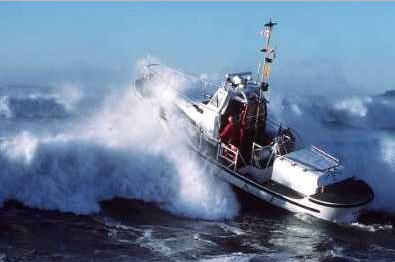
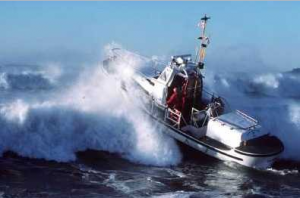 If you Google “Roughest Stretch of Water in the World”, 90% of the results will mention the Drake Passage. The Drake Passage is a 600 mile wide waterway that connects the Pacific and Atlantic oceans between the South Shetland Islands and Cape Horn, and considered one of the worlds roughest waters. The Drake Passage was known for its stormy seas and icy conditions, which made getting through Cape Horn a real test for the ships and crews that were pushing through it. Cyclones that form in the Pacific Ocean cut from west to east across the southernmost part of the passage and add to the rough waters. Another test for this passage is the low temperature winds that range from 41 ˚F in the north and 27 ˚F in the south.
If you Google “Roughest Stretch of Water in the World”, 90% of the results will mention the Drake Passage. The Drake Passage is a 600 mile wide waterway that connects the Pacific and Atlantic oceans between the South Shetland Islands and Cape Horn, and considered one of the worlds roughest waters. The Drake Passage was known for its stormy seas and icy conditions, which made getting through Cape Horn a real test for the ships and crews that were pushing through it. Cyclones that form in the Pacific Ocean cut from west to east across the southernmost part of the passage and add to the rough waters. Another test for this passage is the low temperature winds that range from 41 ˚F in the north and 27 ˚F in the south.
